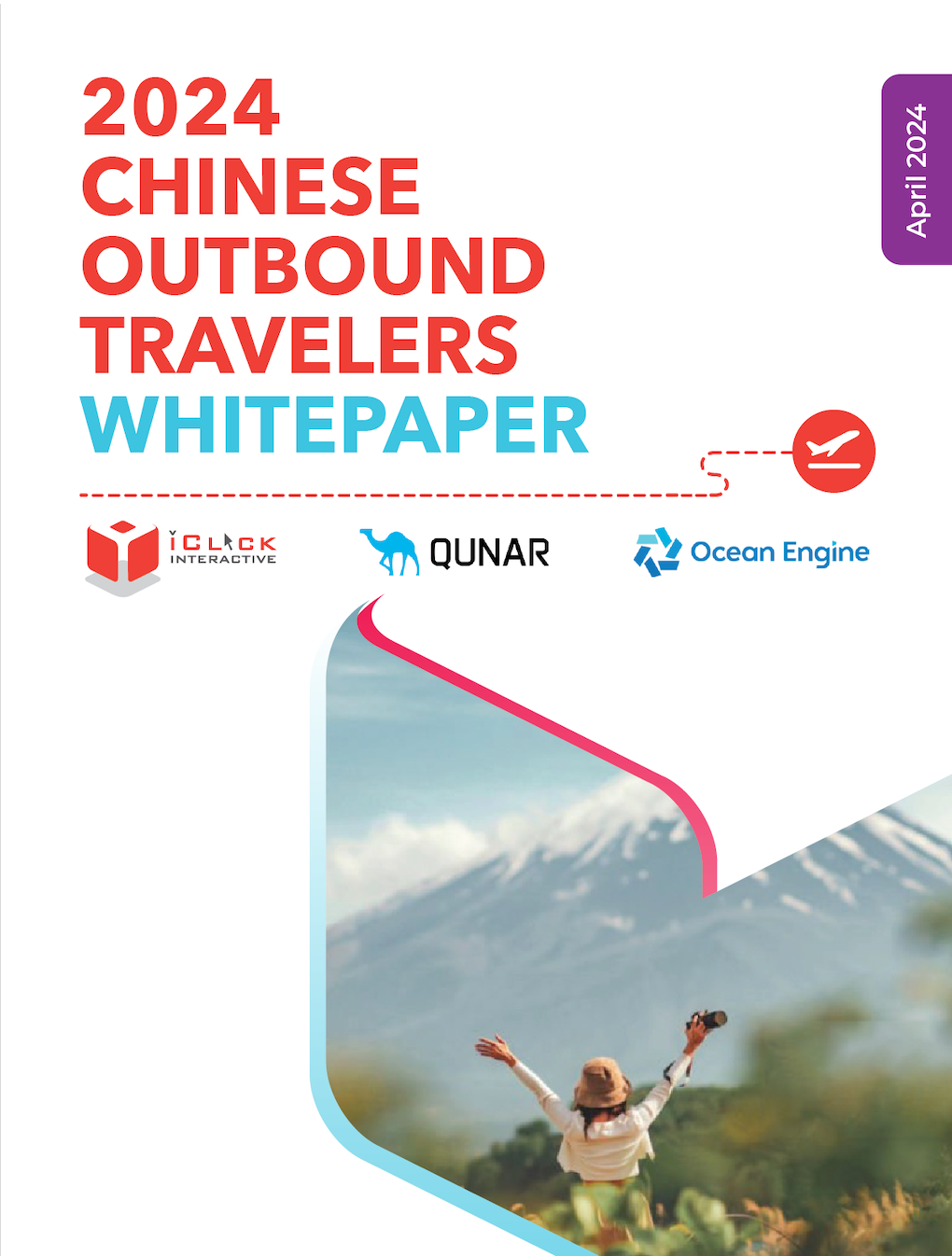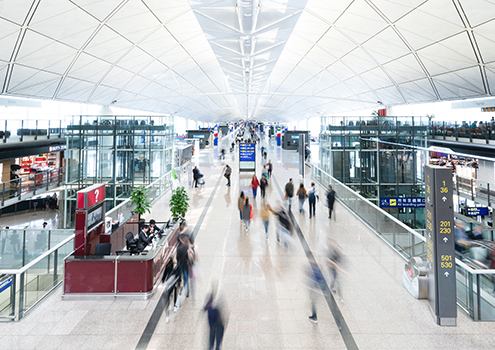
Online marketing and enterprise data solutions provider iClick Interactive has released the 2024 Chinese Outbound Travelers Whitepaper, highlighting an accelerating recovery of China’s outbound tourism and post-pandemic consumption trends.
The report is available to download here. It has been created in collaboration with Chinese travel platform Qunar, digital marketing services provider Ocean Engine (owned by Douyin Group) and a market research firm.
The White Paper indicates that China’s outbound tourism has been making a steady comeback since 8 January 2023, after COVID-related travel restrictions were lifted.
The travel volume of Chinese tourists has already bounced back to the levels seen in the latter half of 2019, according to Qunar. However, it may take some time before outbound travel-related policies, visa and passport issuances, and flight capacities are fully restored.
There has also been significant growth in demand for travel-related content on digital Chinese platforms such as Douyin.
Retail spending in China has also shown robust growth. In November, total retail sales of consumer goods reached RMB4.25 trillion (US$5,935.75 billion), marking a year-on-year growth of +10.1% [source: National Bureau of Statistics of China].
This surge signals a positive trend in consumer confidence and increased spending, both domestically and internationally, the report says.
The post-pandemic Chinese traveller
2024 Chinese Outbound Travelers Whitepaper provides comprehensive insights for brands and marketers, encouraging a deeper understanding of China’s outbound travel sector and the latest consumption trends.
1. Rising demand for long-haul travel: In the post-pandemic era, Chinese travellers are seeking more meaningful and immersive experiences. There has been a significant increase of +42.8% in long-haul outbound tours in 2023 compared to 2019 levels, indicating a desire to explore destinations beyond east and southeast Asia [Source: Qunar 2023 Travel Data Report].
2. Extended stays and increased spending: There’s a notable trend towards longer trips, with a +73.2% surge in trips lasting over six days in 2023 in comparison to 2019. Chinese tourists are allocating more financial resources per trip, with a +14.0% rise in spending exceeding RMB5,000 (US$701.03) per trip, reflecting willingness to enhance travel experiences through higher-quality accommodations and activities [Source: Qunar 2023 Travel Data Report].

3. Flexible planning and experiential travel: A shift in planning behaviour is evident, with 60% of travellers adopting a more spontaneous approach. There’s a growing preference for experiential trips that allow immersion in local cultures, indicating a desire for authentic travel experiences that go beyond surface-level attractions.
4. Shift in luxury retail spending: Before the 2019 pandemic, about 70% of luxury spending by Chinese consumers happened outside Mainland China [Source: Bloomberg]. However, there’s been a notable shift towards domestic luxury shopping, with an expected two-thirds of luxury purchases occurring within Chinese borders by 2027 [Source: Business of Fashion]. The Hainan Free Trade Port is gaining traction among Chinese luxury shoppers, boosting the growth of the domestic luxury market.
Building virtual connections

Chinese travellers are increasingly relying on digital platforms for every stage of their journey, including pre-trip preparations, in-trip experience and post-trip reflections.
Douyin alone recorded over 450 million travel enthusiasts, showing a +23% year-on-year growth in the fourth quarter of 2023 [Source: Ocean Engine 2023 Travel Data Report]. This has attracted various tourism enterprises and influencers to establish their presence on the platform.
Xiaohongshu has also witnessed a surge in travel-related content, impacting Chinese travellers’ decision-making processes. Additionally, more players in the travel retail industry – including online agencies, hotels and duty-free operators – are utilising WeChat Mini programs to reach a wider audience.
Online travel agencies (OTAs) such as Ctrip, Qunar and Tongcheng are serving as key platforms in shaping Chinese outbound passenger experiences. They serve as comprehensive spaces for research and planning, booking flights, accommodations, tours and activities.
OTAs offer diverse options for comparing prices, amenities and reviews, making travel accessible to a wide audience, especially those from non-tier 1 cities.
OTAs leverage technologies such as artificial intelligence (AI) to continuously improve user experience. Through partnerships with airlines, hotels and tourism operators, these platforms provide exclusive deals and discounts, significantly influencing the travel retail industry.

The prevalence of digital payment platforms has further transformed the outbound travel experience for Chinese travellers. With options such as Alipay and WeChat Pay accepted globally, consumers can initiate transactions for accommodation, transportation, dining and shopping without the need for cash or currency exchange.
Rise of smart tourism
The integration of virtual reality (VR), augmented reality (AR) and AI technologies are transforming the travel industry in China.
It has become commonplace for amusement parks, museums and tourist attractions to implement AR navigation and immersive experiences to enhance visitor engagement. Online travel agencies are also introducing AI-based travel assistants to improve user experience and efficiency.
AI-powered features for travel planning – including recommendations, price comparisons, and personalised suggestions – are becoming ever more vital for enhancing the travel experience, the White Paper notes.

What does this mean for marketers and brands targeting Chinese travelling shoppers?
1. Embrace digital channels: Showcase the brand and engage Chinese travellers on their preferred digital platforms, from social media to online travel agencies and short-video platforms. With passengers relying heavily on digital platforms for travel decisions, it’s crucial for brands to establish a strong presence across these channels.
2. Prioritise personalisation: As Chinese travellers increasingly seek longer, deeper and more flexible travel experiences, marketers and brands need to align with individual preferences and desires, offering bespoke experiences that resonate on a personal level.
3. Utilise innovative technologies: Embrace the latest developments such AI and AR to create experiences that captivate and engage travellers, enhancing brand appeal and standing out in a crowded marketplace.
4. Stay agile and responsive: Stay informed about outbound travel policy changes in China to anticipate shifts in traveller behaviour and adjust marketing strategies accordingly. Being agile and responsive to updates helps capitalise on opportunities and stay competitive in the Chinese travel retail market, keeping the brand relevant for Chinese consumers. ✈








